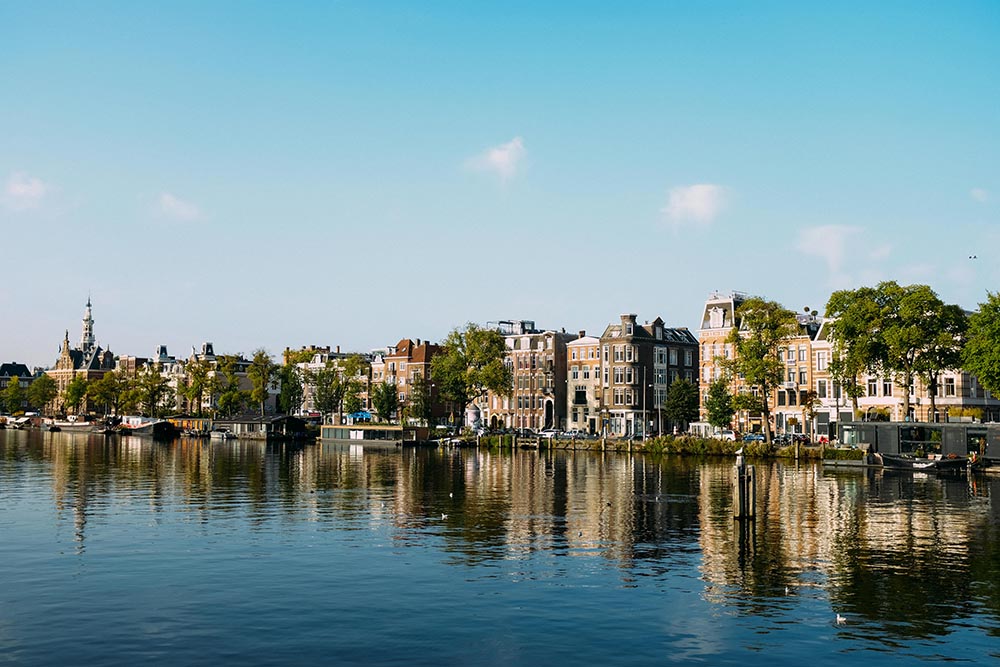
News from Amsterdam; ADM site, Vliegenbos, parking permits and speed cameras.
Amsterdam never stands still, and recent developments and decisions are no exception. From extensions of tolerance periods to trials with lighting in forests and new rules for parking permits, here is an overview of what is happening in the city.
ADM residents tolerated longer on green field.
The Amsterdam-Noord district wants the former residents of the ADM site to stay longer on the green field near the former sewage treatment plant along the A10. The city council aims to create a public landscape park with space for culture, events and a rugby union. Sixty residents of the ADM site vacated in 2019 are tolerated on the water treatment plant’s sludge fields until October 2024. North wants to extend this deadline to October 2025.
This leaves no room for Tennet’s substation, for which another location must be sought.
Experimental live/work community
The city council must soon decide the fate of the ADM workers. The site, developed by local residents and ADM workers, has rich cultural programming. Noord advocates for a permanent experimental living-working community on the western half of the Groen field. This provides time to explore permanent occupancy.Part of the Green field is to become a sports field for Rugby Club Amsterdam, which will have two fields here. The former ADM workers welcome this proposal.
Vliegenbos: lampposts out
Starting May 28, the lights in the Vliegenbos in Amsterdam-Noord will go out at night. From May 28 to December 2025, the municipality will turn off the street lights completely between 11 p.m. and 5 a.m.. This protects the flora and fauna in the forest because artificial light disrupts the biorhythms of people, animals and plants. It has a negative effect on the reproduction and orientation of many animal species and can cause animals to be blinded or burned.
The community will remain in contact with the neighborhood police officer, safety coordinator and area broker during the trial to ensure that the forest remains safe. “More light in practice does not make for more safety,” a spokesman said. “Vandalism or graffiti just needs light to take place.”
That artificial light is bad for nature is confirmed by scientists. Ronald Hooft, president of the W.H. Fly Forest Foundation, supports the trial, but calls it “flimsy. He calls for structural investment and better bicycle routes in the forest, with paths going around vulnerable forest patches. Hooft wonders what exactly the trial will accomplish, since there is no baseline measurement of current biodiversity.
However, the community has done a baseline survey of bat numbers and expects more bat activity and an increase in light-sensitive species due to less lighting. Results will be shared after the pilot.
No parking permit for polluting cars
From Jan. 1, 2025, cars with emission class 4 or lower will no longer be eligible for a parking permit in Amsterdam. This is a measure to improve air quality. You can give your opinion on this proposal from April 22 to June 10, 2024.
Current rules
The current rules apply until Jan. 1, 2025:
- Cars that run on diesel with emission class 3 or lower will not receive a parking permit.
- Gasoline cars with emission class lower than 1 (Euro 0) are not eligible.
- Cars running on other carbon-based fuels (LPG, CNG, ethanol, alcohol and E85) with emission class lower than 1 (Euro 0) will not be licensed.
Checking your emissions class: Check your vehicle code and emission class with the RDW via ovi.rdw.nl:
Look up your license plate number.
- Go to engine & environment.
- Go to emissions.
- Exceptions
Cars with parking permits prior to April 1, 2017 will retain their permits. However, this does not give automatic access to the environmental zone for diesel cars. Do the license plate check to see if you are allowed to drive in the environmental zone. The environmental zone does not apply in Weesp.
When changing the license plate on your parking permit, the new car must also meet environmental requirements. If the new car is polluting, the permit expires unless it is a temporary loaner car from the garage.
We like to keep you informed about news from Amsterdam. As real estate agents, we are closely involved in developments in the city, and with an office in Amsterdam-Noord, we are particularly interested in the ins and outs of this dynamic district. Stay tuned for further developments and announcements through our channels
Speed cameras on 30-kilometer roads in Amsterdam.
As of June 1, motorists in Amsterdam who drive faster than 30 kilometers per hour can be flashed. Both permanent and temporary speed cameras, which were not yet in use, then actually start flashing. This is part of the move to lower the speed limit on most streets to 30 kilometers per hour, a unique move for large Dutch municipalities. The Central Processing Prosecutor’s Office is going to hand out fines to improve road safety.
Enforcement after adaptation period
The four fixed speed cameras on Stadhouderskade are set to the new speed limit and had been turned off for the past few months. Starting June 1, “flex flash units” will also be deployed on Postjesweg, Kattenburgerstraat and Oostenburgergracht, where each location will be flashed for about two months. For now, this is a pilot of several months to test the effectiveness of speed cameras. Traffic Councilwoman Melanie van der Horst stressed the importance of enforcement after a six-month habituation period for the new speed limit.



